Walmart recently added 5,000 square feet to a Huntsville, Alabama, store to serve online grocery shoppers. The extension looks perfectly ordinary: a box of 16-foot walls abutting the existing store with the word “Pickup” and an arrow painted near the entryway. But the addition represents an achievement that borders on the extraordinary.
Five workers raised the structure’s three walls in seven days thanks to 3D concrete printing, or 3DCP, technology. Conventional masonry block construction would have required around 15 laborers and five weeks, said Patrick Callahan, CEO of Alquist 3D, a Greeley, Colorado-based 3DCP firm that launched in 2020 and focuses on commercial and residential construction. Alquist 3D partnered with Atlanta-based contractor FMGI to build Walmart’s expansion.
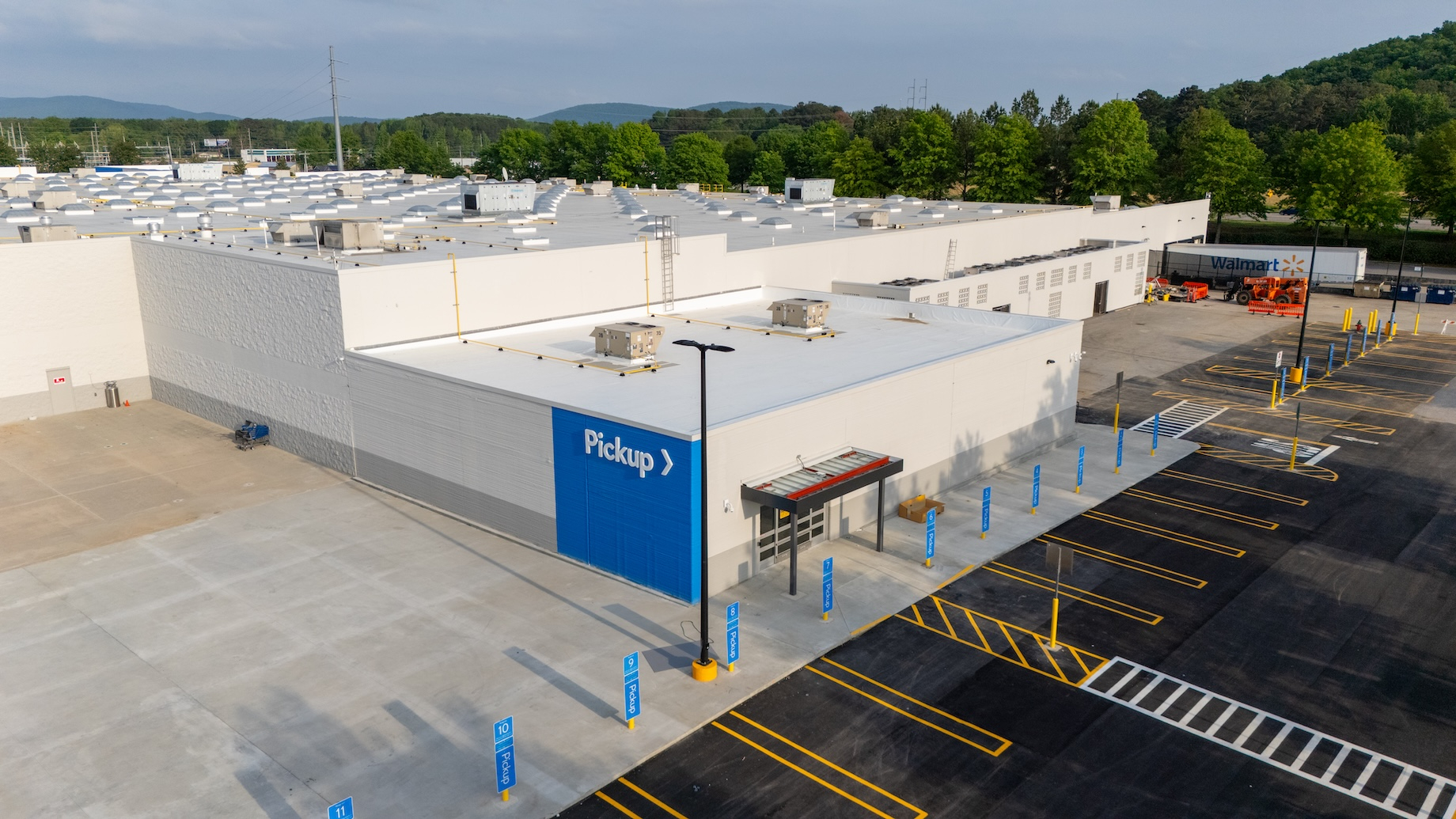
Alquist 3D and FMGI built a 5,000-square-foot online order-pickup building at a Walmart near Huntsville, Alabama. The team completed a similar project for the retailer last year in Athens, Tennessee. Photo courtesy of Alquist 3D
3DCP’s potential to save time and labor likely will increase developer and operator interest in such technology across real estate sectors, including retail, entertainment and restaurants. While the cost of these construction projects varies depending on location, building type and other factors, Callahan said “printing” a building of 5,000 to 10,000 square feet could cost 16% less than concrete block construction.
Additionally, 3DCP has illustrated a capacity to reduce carbon and waste, a resiliency in weather conditions that otherwise would delay construction, and an ability to create stronger and longer-lasting structures, he said.
“3DCP has been around for a while, but it has taken a leap over the last three years. You’re going to see it really take off over the next 12 months.”
“Walmart really wanted us to show that we could build a structure in less time than a conventional crew, and it took about 75 hours of actual printing time to complete,” remarked Callahan, a defense industry veteran who joined Alquist 3D in 2023. “3DCP can save retailers who have a lot of repeatable structures a tremendous amount of time and cost while giving them a greener and more sustainable building.”
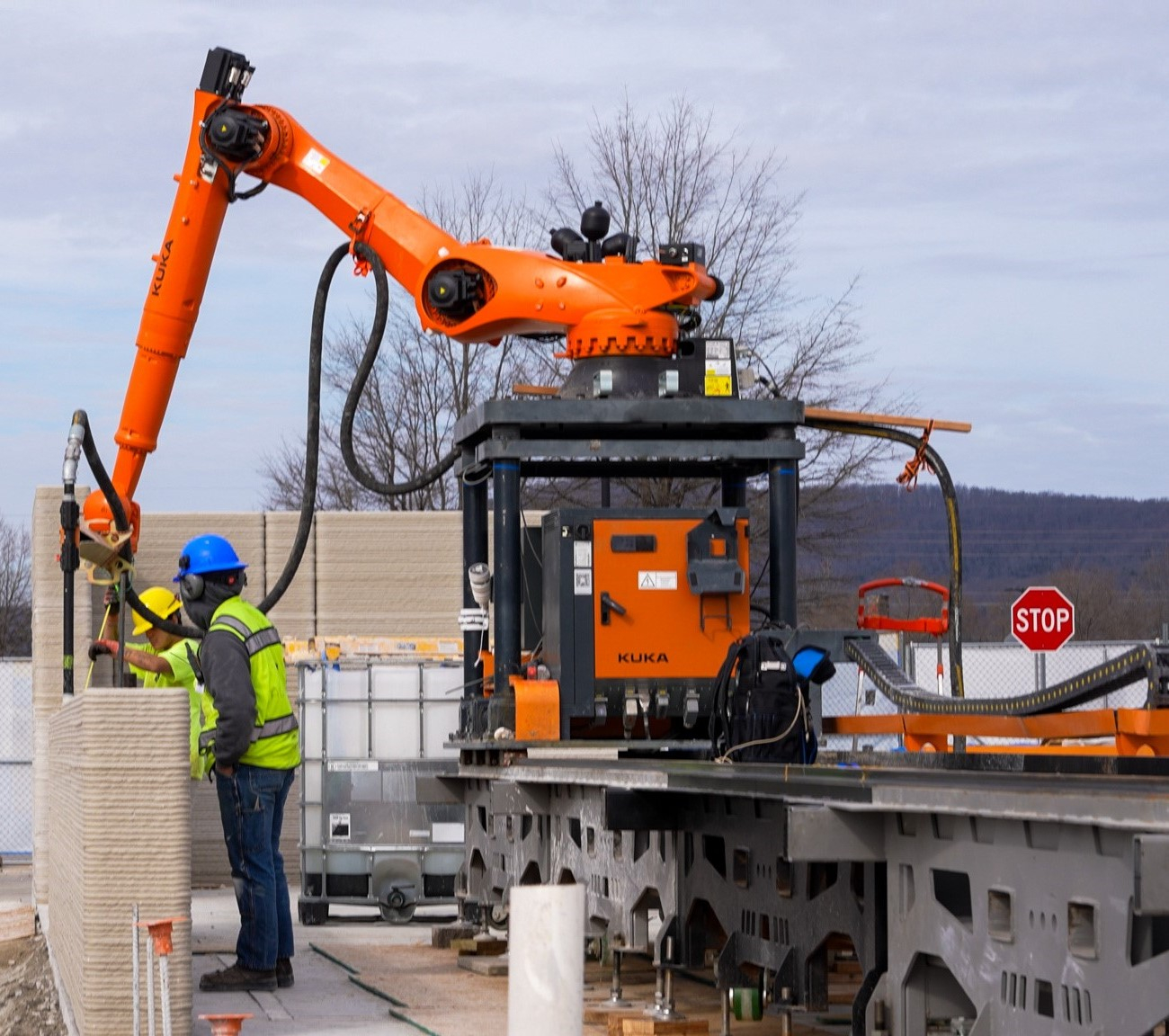
A code created for the building’s design tells Alquist 3D’s robotic extrusion arm how to “draw” Walmart’s walls as the printer moves along rails. Photo courtesy of Alquist 3D
Building Codes
3DCP doesn’t differ much from 3D printing of dental implants, prosthetic limbs, footwear insoles, car parts and other smaller-scale items. In Alquist 3D’s setup, coding guides a robotic extrusion arm along a rail system and tells it how to “draw” the walls.
Among the obstacles to broader adoption of 3DCP has been the “ink” that sprays out of the extrusion arm nozzle. But over time, specialty chemical companies like Sika USA, which supplied Alquist 3D for the Walmart job, have incorporated additives to improve the material’s flow to and through the nozzle and the adhesion of layers, among other performance measures.
Even so, Alquist 3D and FMGI climbed a steep learning curve last year during their first job with Walmart, an 8,000-square-foot online order-pickup building in Athens, Tennessee. That project, which took 41 days, served as an experiment of sorts as the team confronted several difficulties in an extremely hot and humid environment. Among the most vexing was managing the temperature of the dry powder and water during mixing in order to keep hoses from clogging and to achieve consistency, Callahan recalled.
The team ultimately illustrated the commercial viability of 3DCP, even in less-than-ideal conditions, as evidenced by Walmart’s decision to follow up with a second 3D-printed project in Huntsville. Leveraging their experience in Tennessee, Alquist 3D and FMGI implemented a detailed, coordinated tactical plan to tackle the job, Callhan stated. “We walked through all of it and had a very consistent process from the day we got on the site,” he explained.
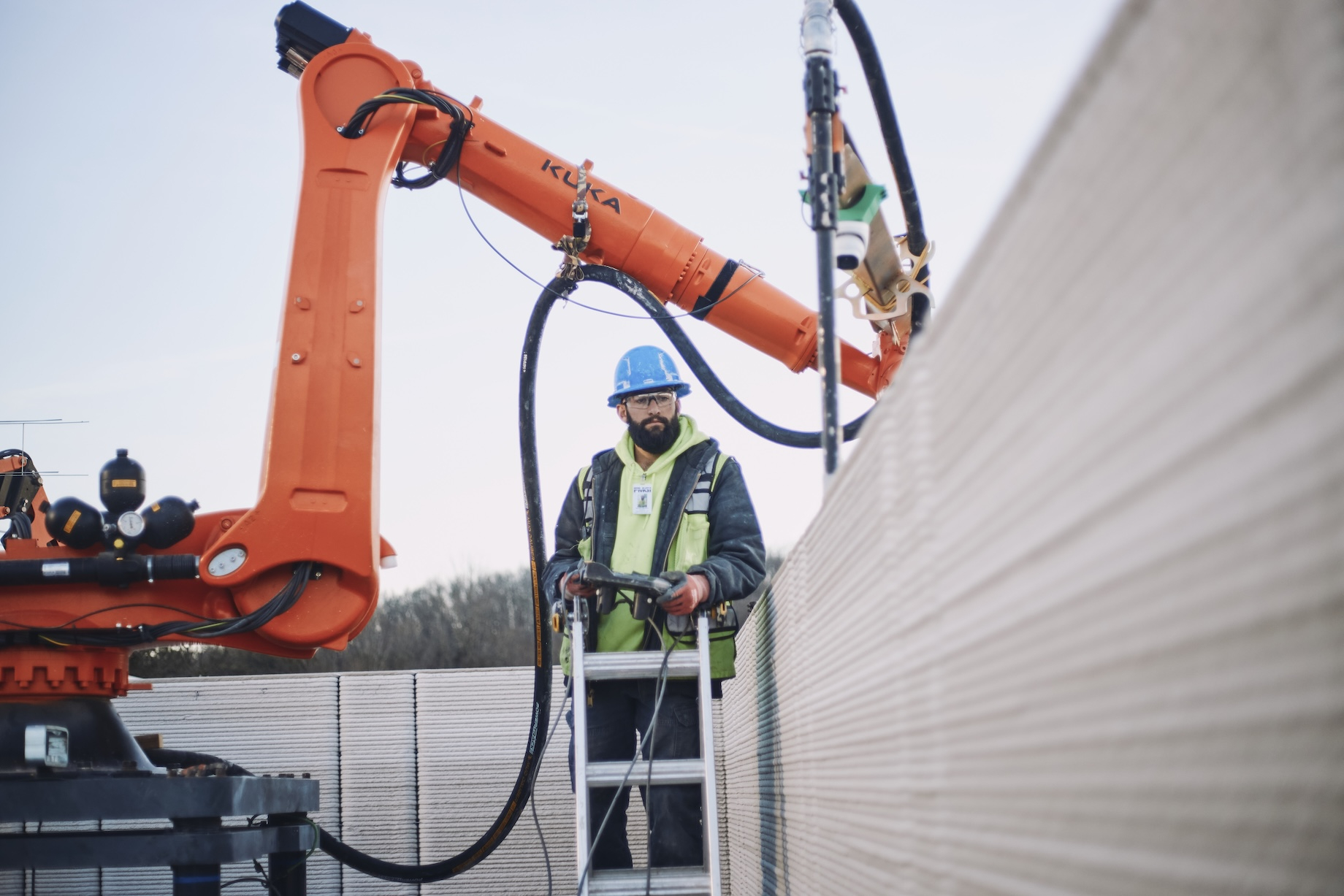
A worker keeps tabs on the progress of the 3D concrete printer in Huntsville. Photo courtesy of Alquist 3D
Awaiting Scale
While the concrete mixture remains costlier than masonry block construction because of the small number of 3DCP players, the price is coming down. Callahan said it has dropped about 30% since 2023. The price seemingly will fall farther as adoption widens and creates more demand for the material.
Callahan maintains that 3DCP is already competitive, stating that waste on the Huntsville project was less than 5%, for example, compared with more than 15% for masonry block construction, which produces molds and forms and some amount of broken concrete that later are thrown away. Alquist 3D also used only 75% of the 130 bags of cement it thought it would need, thanks to its continued refinement of the process. “Our coding guys tell us how much we need for the day based on the building’s design and we mix the material as we go, so we have minimal waste unless we have a problem,” Callahan said.
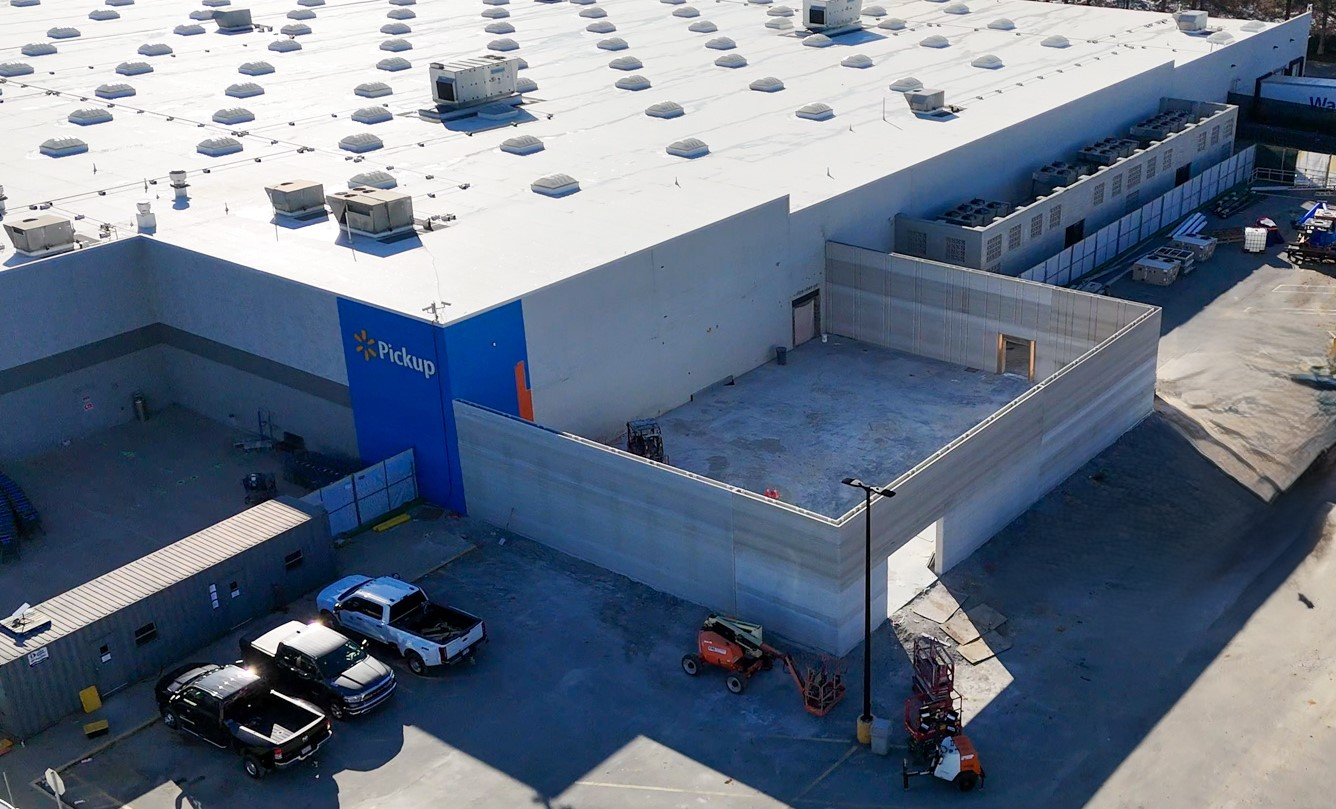
Alquist 3D and FMGI ran the 3D concrete printer for 75 hours to build three 16-foot walls that framed Walmart’s expansion in Huntsville. Photo courtesy of Alquist 3D
Firming Demand
Walmart isn’t the only store operator to pursue 3DCP. In April, Starbucks opened a 1,400-square-foot, store in Brownsville, Texas, to serve drive-thru and walk-up customers exclusively. European partners COBOD and Peri 3D Construction completed that project using a gantry-style printer to build walls. Florida’s Tyndall Air Force Base also has used 3DCP to rebuild parts of the base that Hurricane Michael damaged in 2018.
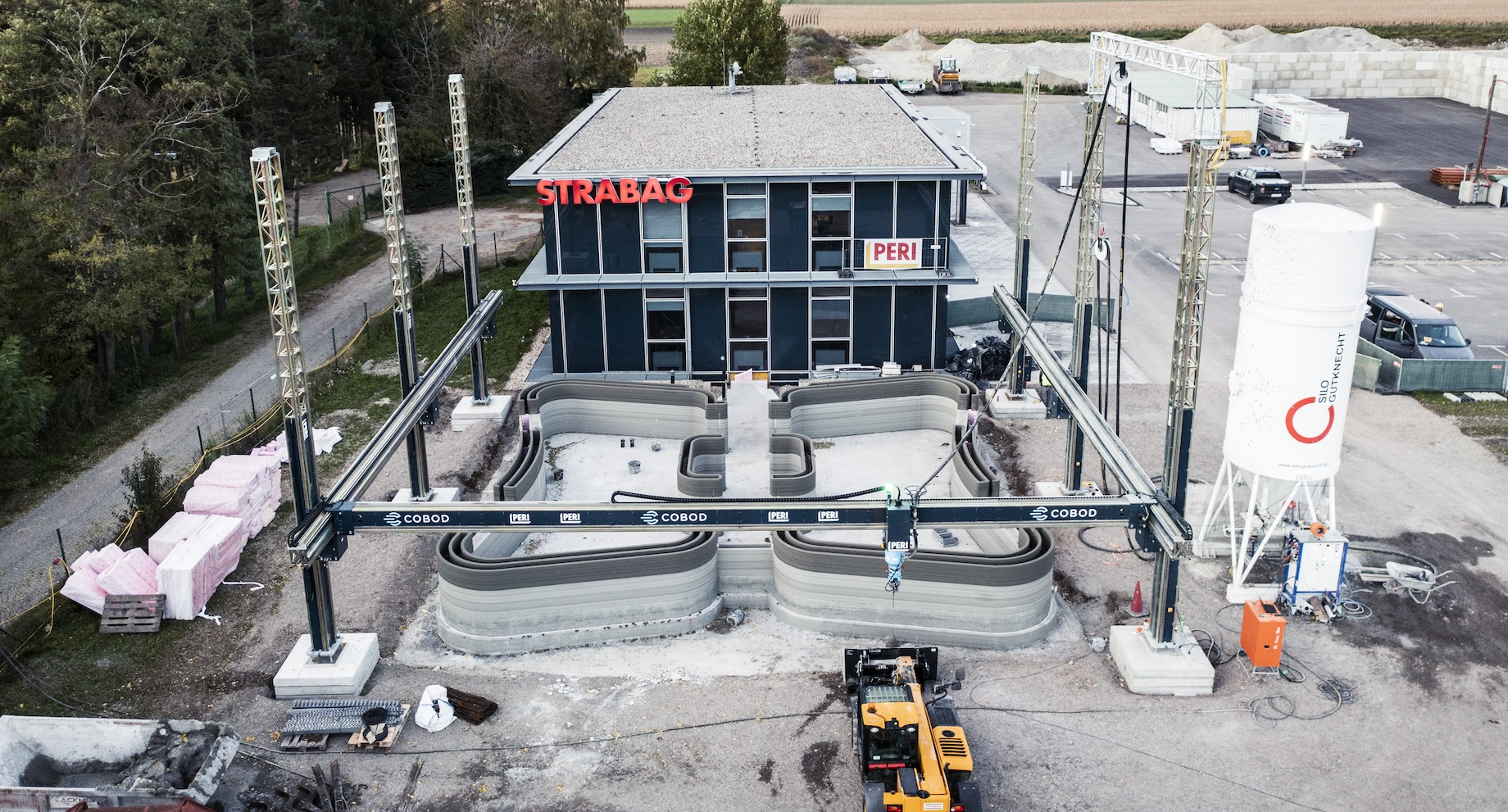
Peri 3D Construction’s gantry-style printer built this 1,345-square-foot office building in Hausleiten, Austria, in 2021. Construction of the walls took 45 hours. Photo courtesy of Peri 3D Construction
The two Walmart jobs represent Alquist 3D’s first foray into commercial construction. Callahan expects new commercial assignments, plus work on single-family homes and landscaping architecture to keep his company busy. “3DCP has been around for a while, but it has taken a leap over the last three years,” he said. “You’re going to see it really take off over the next 12 months.”
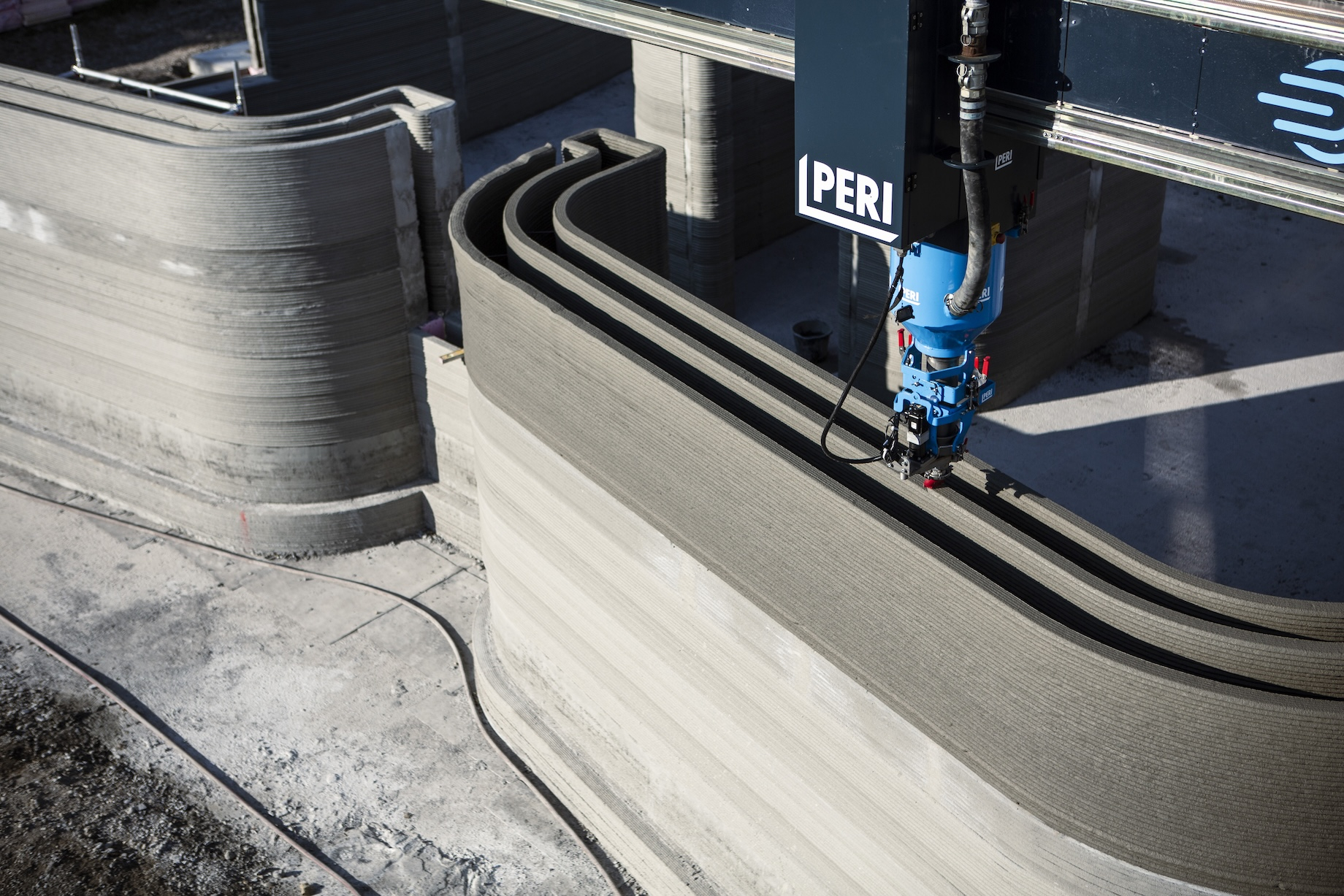
Peri 3D Construction’s printer at work on a 2021 office project in Hausleiten, Austria Photo courtesy of Peri 3D Construction
By Joe Gose
Contributor, Commerce + Communities Today